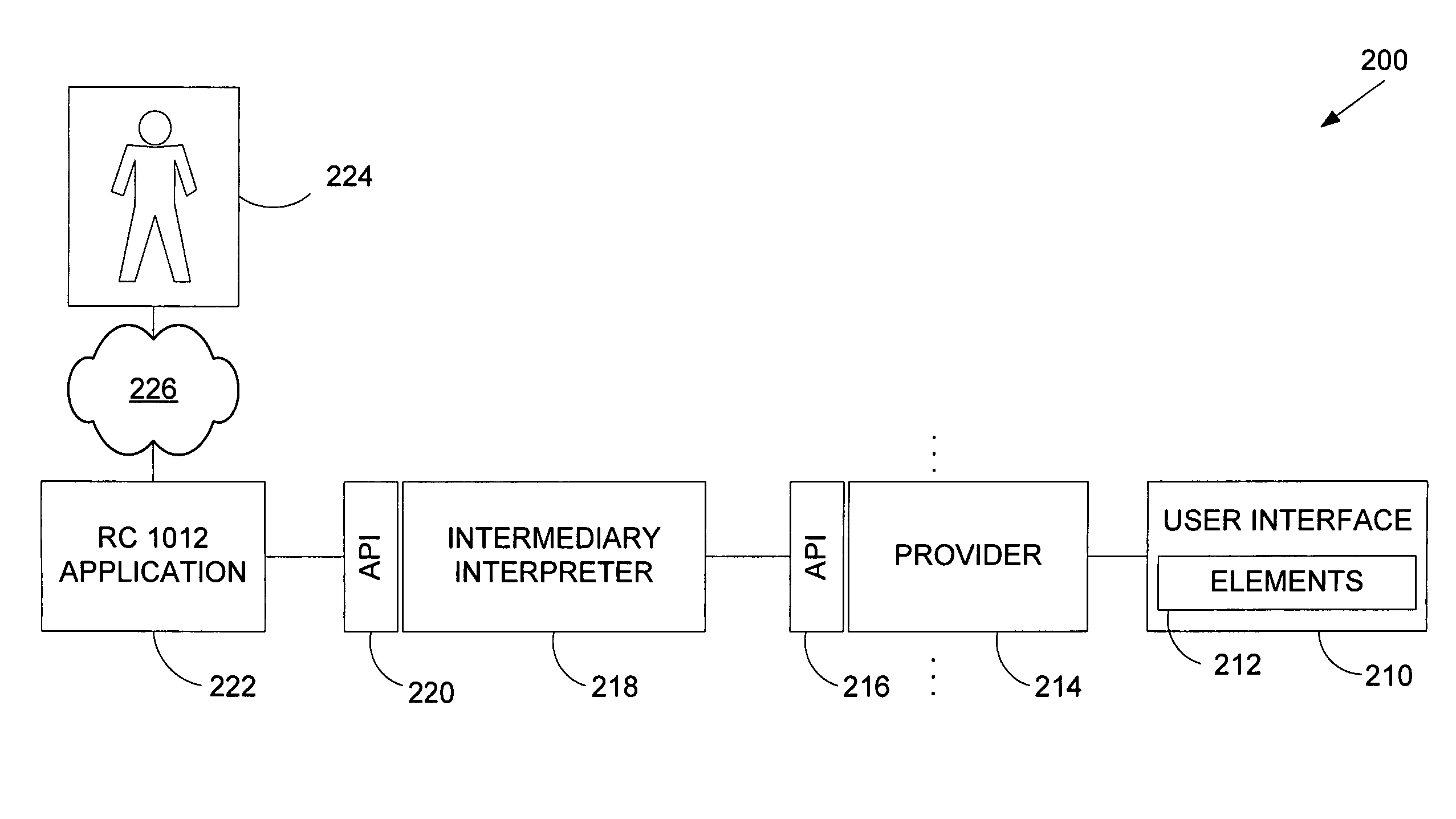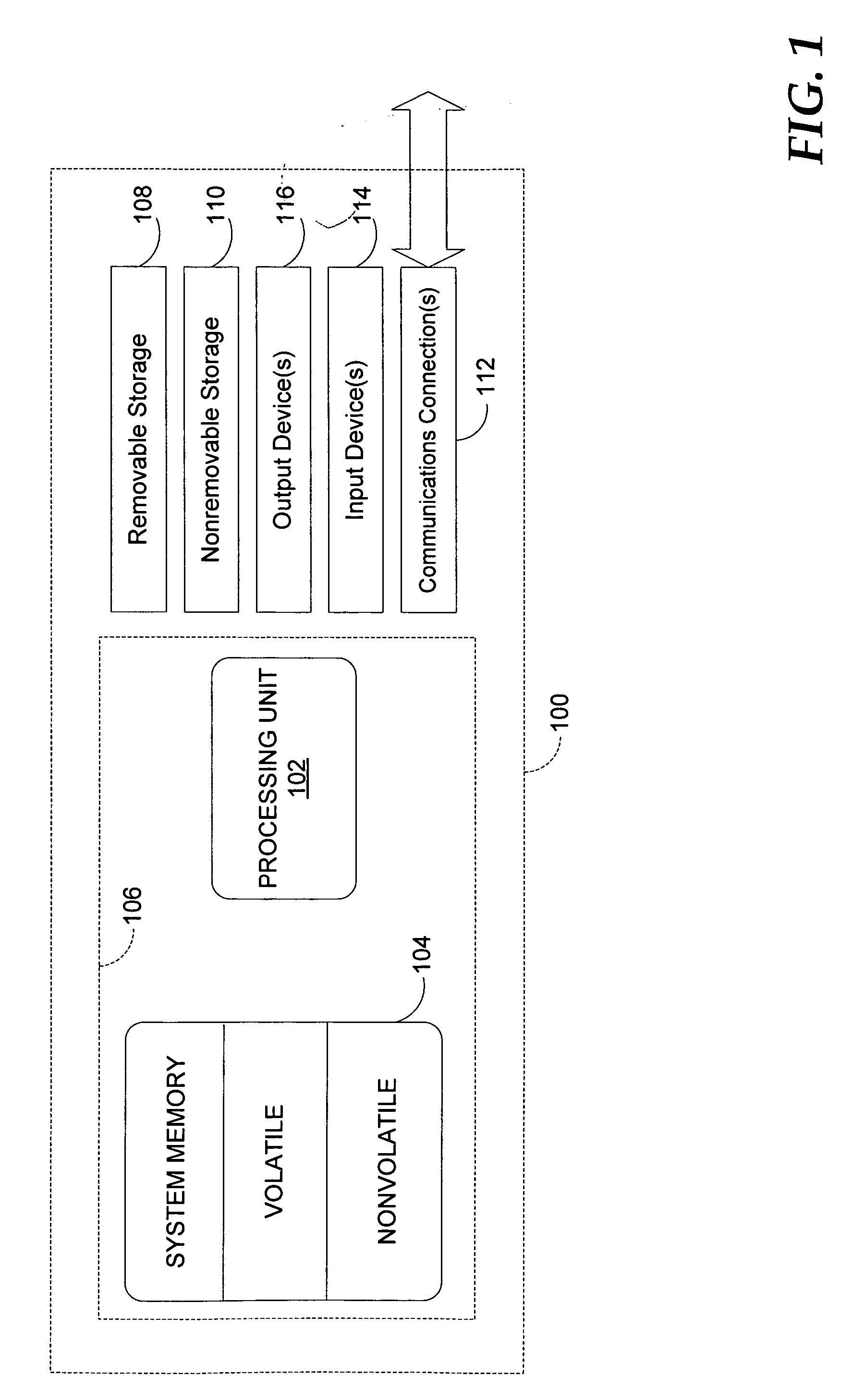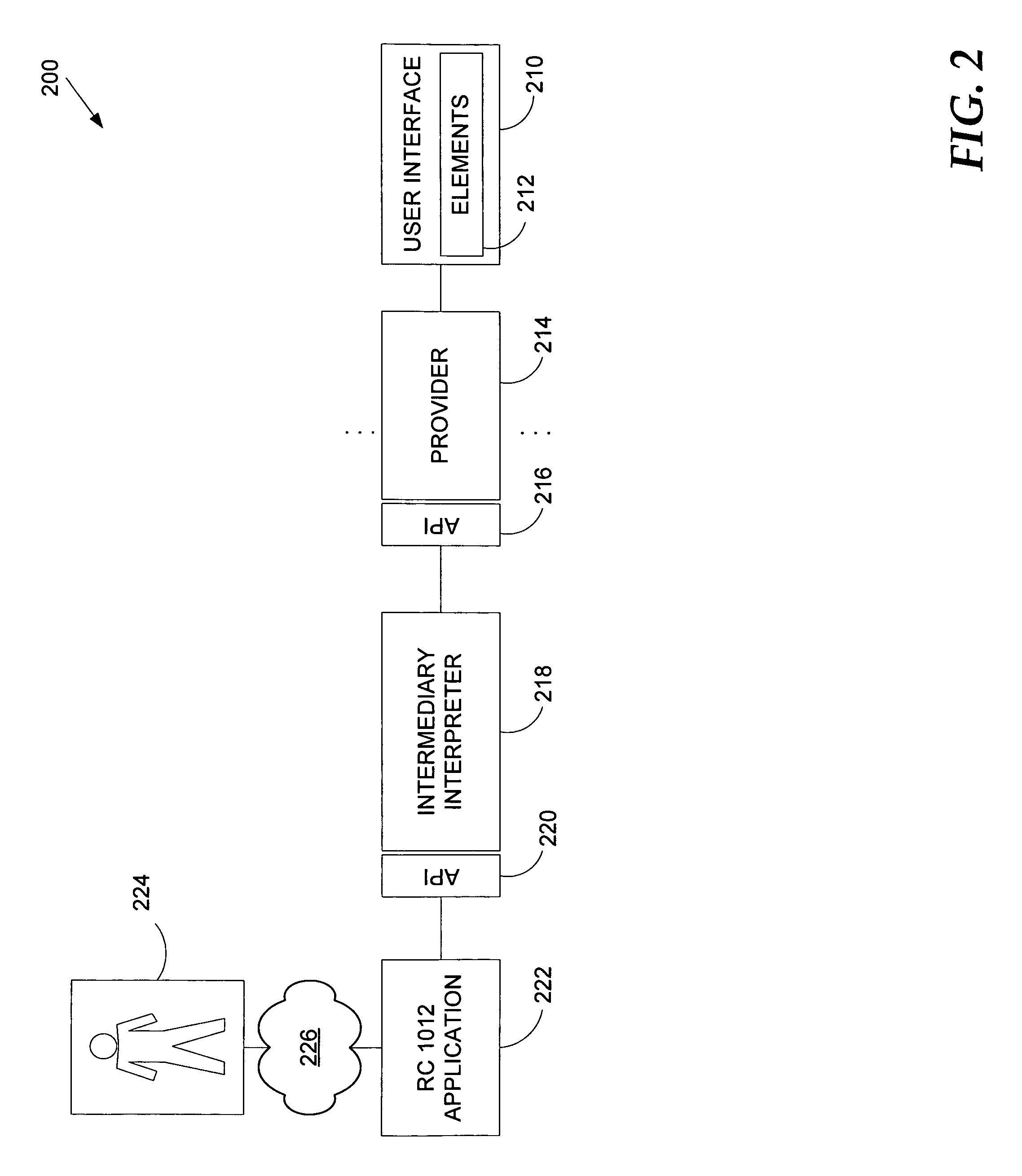Method and system for providing information related to elements of a user interface
a technology of user interface and information, applied in the field of collecting information related to user interface elements, can solve the problems of not knowing where the values are stored, the person who needs to know about every type of vcr is unrealistic, and the assistive-technology application must function with limited knowledge of the application's user interface, so as to simplify the development of components, simplify the navigation of structure representation, and increase the effect of run-time performan
- Summary
- Abstract
- Description
- Claims
- Application Information
AI Technical Summary
Benefits of technology
Problems solved by technology
Method used
Image
Examples
Embodiment Construction
[0051] The present invention provides a novel method and apparatus for retrieving and using information associated with a target user interface by bundling UI-element-attribute information with a the results of an element-information request, and returning the bundle to a client application rather than just the element itself.
[0052] The present invention will be better understood from the detailed description provided below and from the accompanying drawings of various embodiments of the invention. The detailed description and drawings, however, should not be read to limit the invention to the specific embodiments. Rather, these specifics are provided for explanatory purposes that help the invention to be better understood.
[0053] Specific hardware devices, programming languages, components, processes, and numerous details including operating environments and the like are set forth to provide a thorough understanding of the present invention. In other instances, structures, devices...
PUM
 Login to View More
Login to View More Abstract
Description
Claims
Application Information
 Login to View More
Login to View More - R&D
- Intellectual Property
- Life Sciences
- Materials
- Tech Scout
- Unparalleled Data Quality
- Higher Quality Content
- 60% Fewer Hallucinations
Browse by: Latest US Patents, China's latest patents, Technical Efficacy Thesaurus, Application Domain, Technology Topic, Popular Technical Reports.
© 2025 PatSnap. All rights reserved.Legal|Privacy policy|Modern Slavery Act Transparency Statement|Sitemap|About US| Contact US: help@patsnap.com



